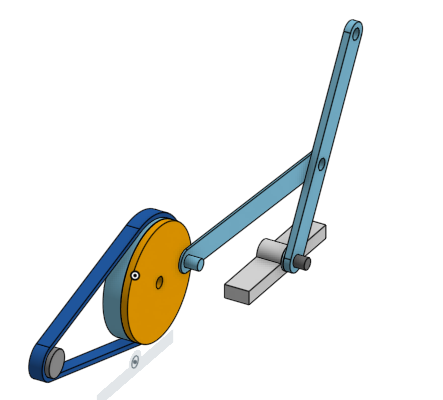I have a motor that I have created a simple adapter for; this lets us attach any parts we might design to solve the final problem:
I would like to convert the motors motion to oscillating motion in two directions from one.
The classic "woodcutter" solution to this is:
However that does not give me the throw I would like for the final motion in either direction. Ideally this mechanism will sit on the floor - which SORELY limits the available "height" during rotation of any such "arm"
This motor has very high torque so it may be possible to move other structures while at a mechanical disadvantage in oblique (aka not smashing through the floor) planes?
In a nutshell after a couple of days thinking it idly over haven't managed a better solution yet.
Considered some sort of scissor motion? but couldn't firm up the details.
Is there a classic - obvious - solution to this problem?
Full disclosure: I have no formal training whatsoever in engineering.
Appreciate any assist.
EDIT: I should add that I did think about some sort of reversing screw mechanism? but didn't manage to make that work yet in practice. perhaps That could be part of the solution but it doesn't solve the problem of throw either, well not without being really long and actually working. I might figure something out with this I guess?
This would result in motion in the other direction - which would be okay but if there is a more reliable or "better" way to get this motion would love to hear of it. Struggling with the screw solution.





